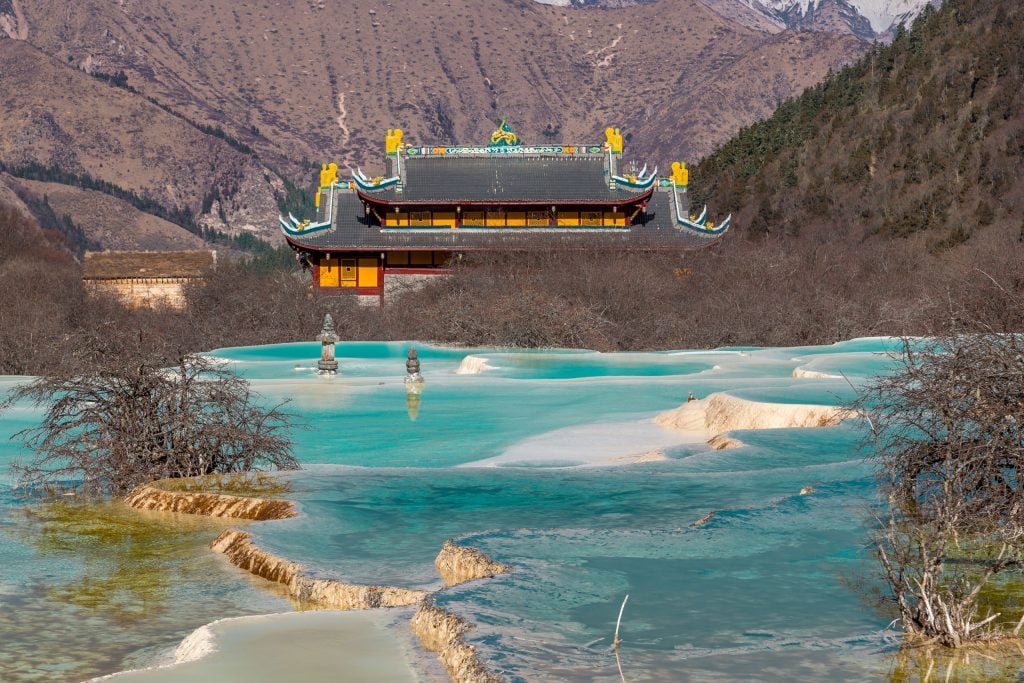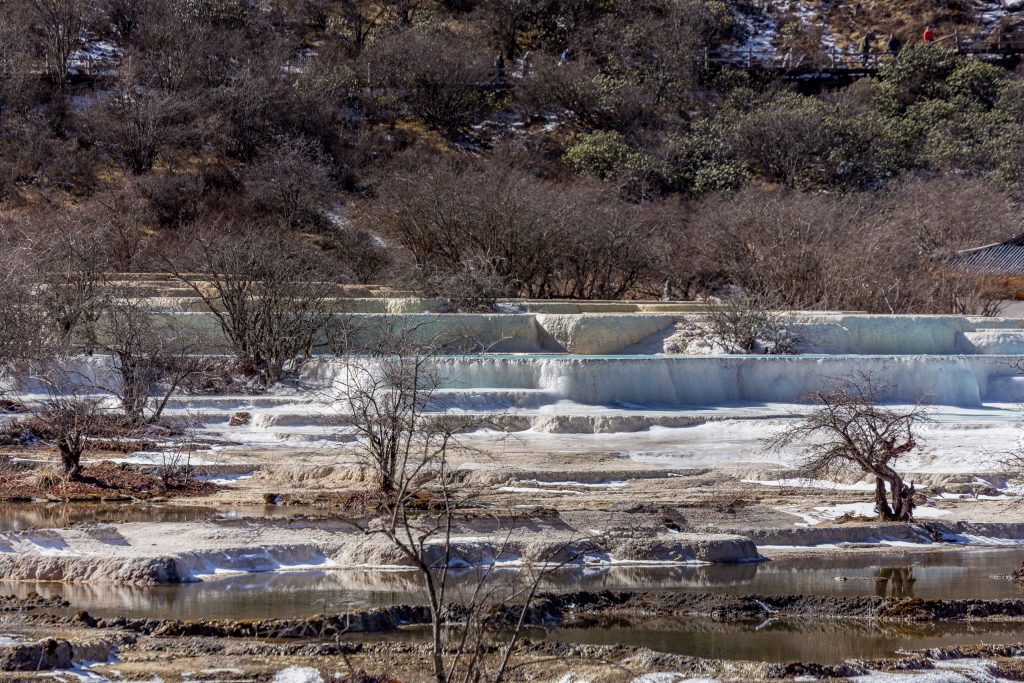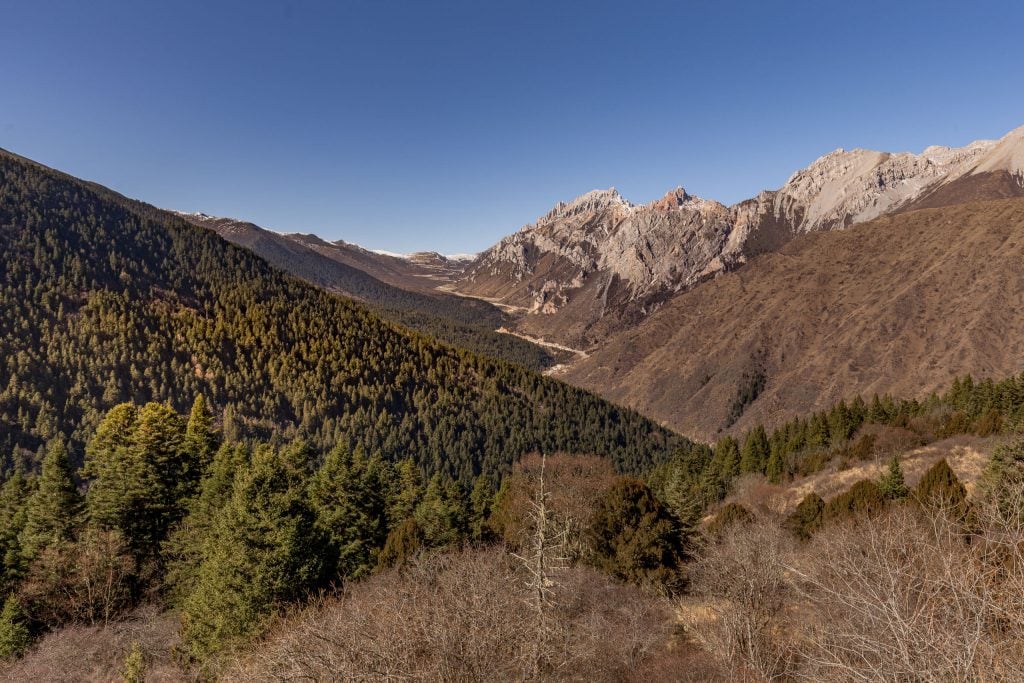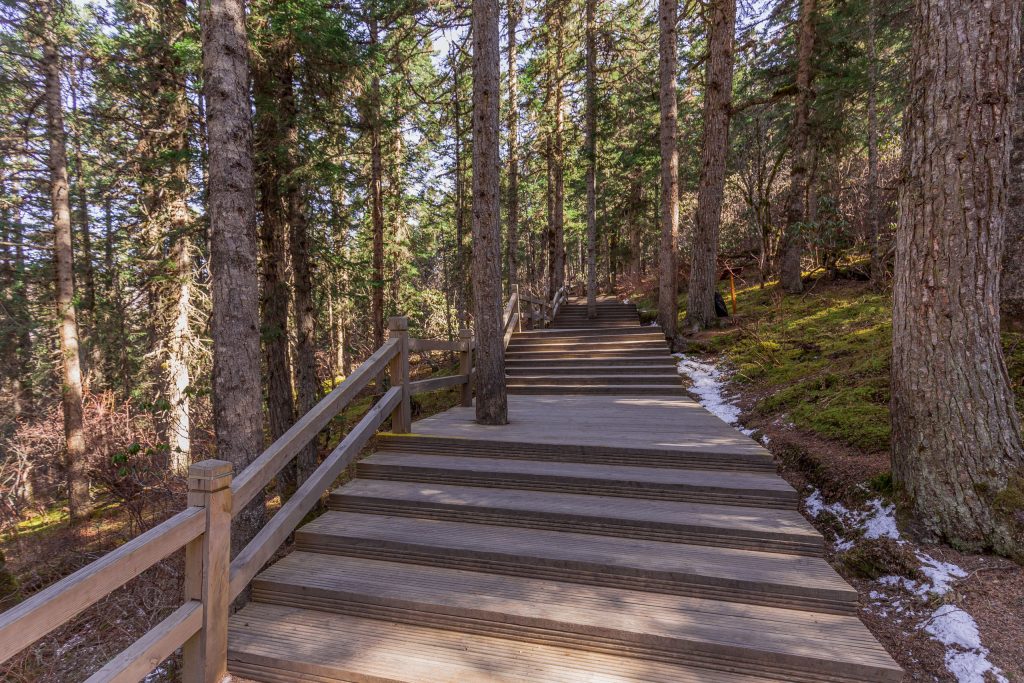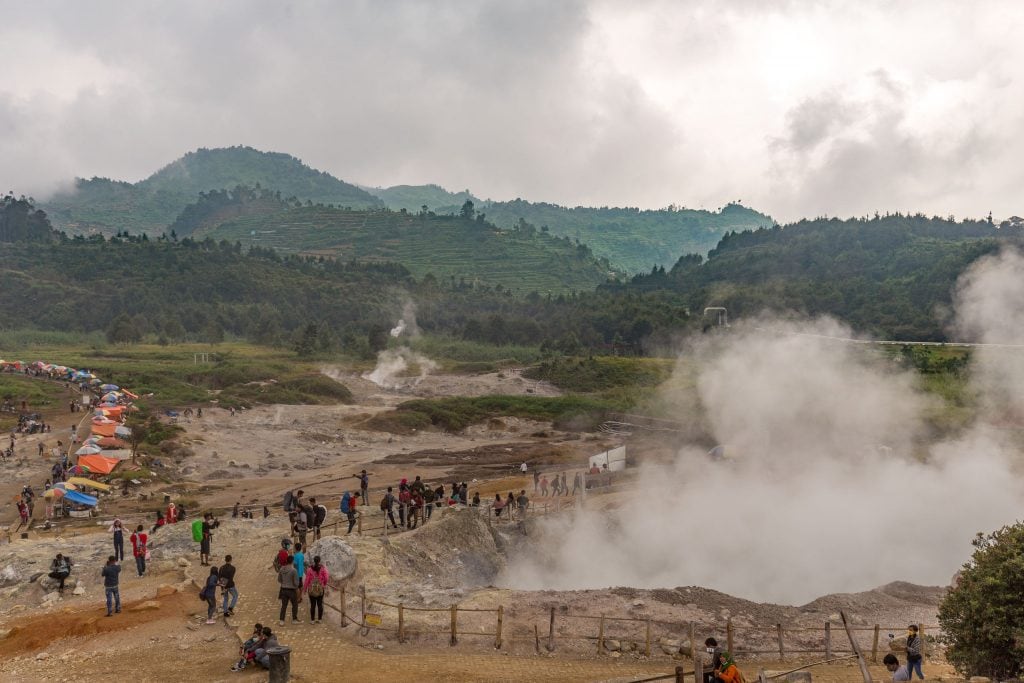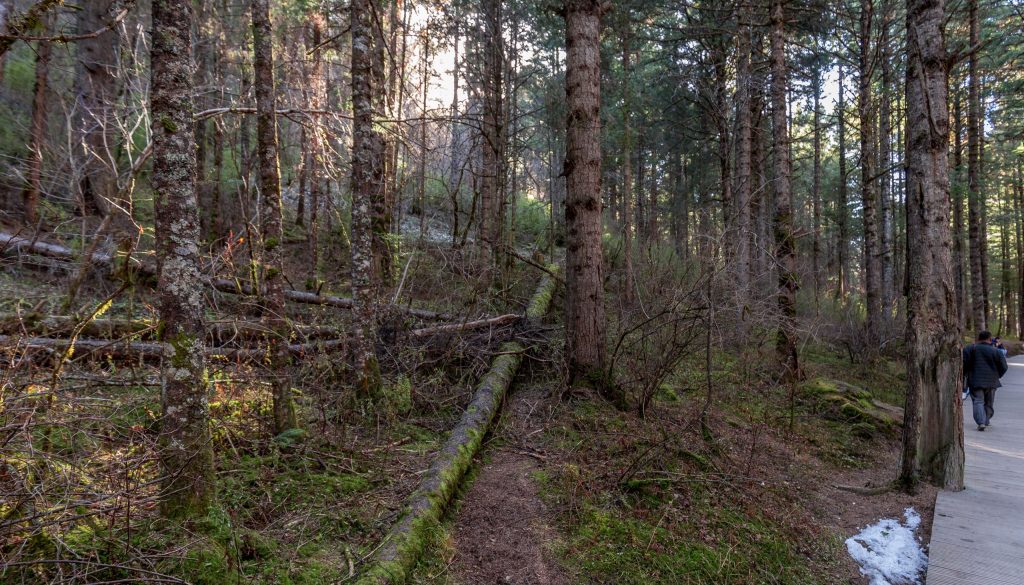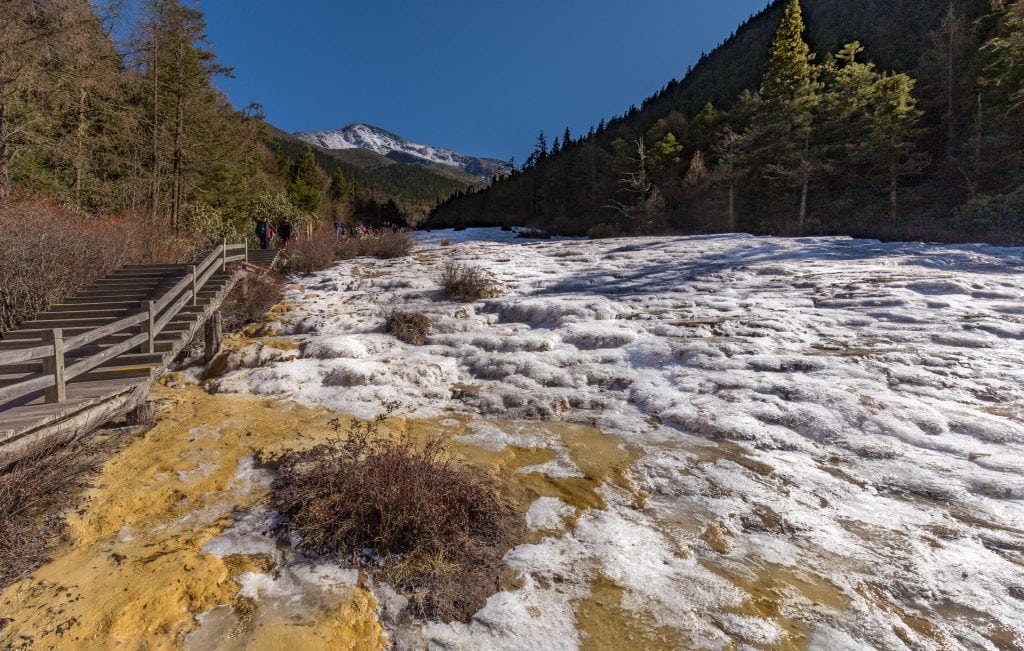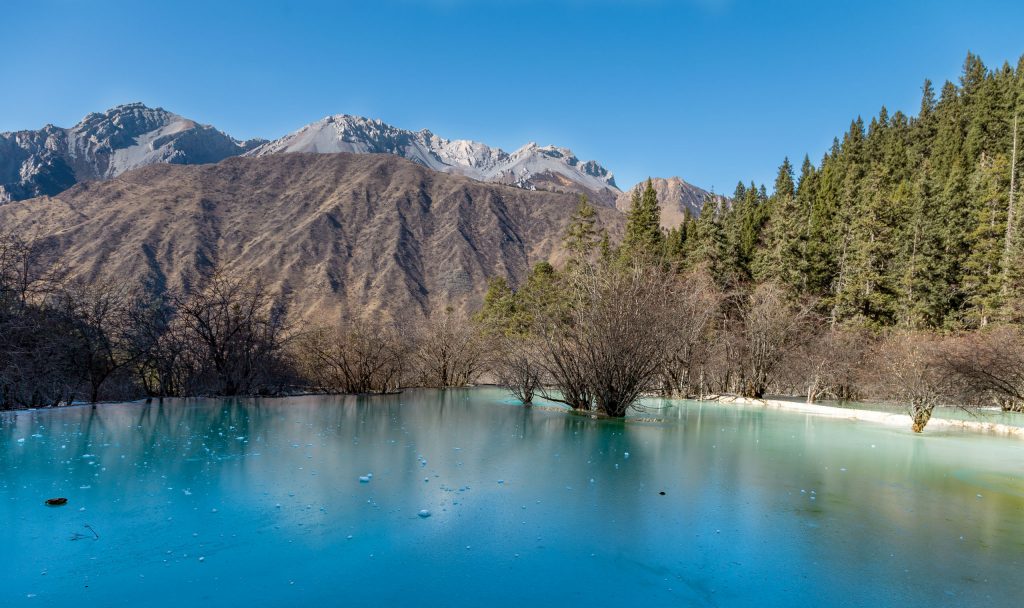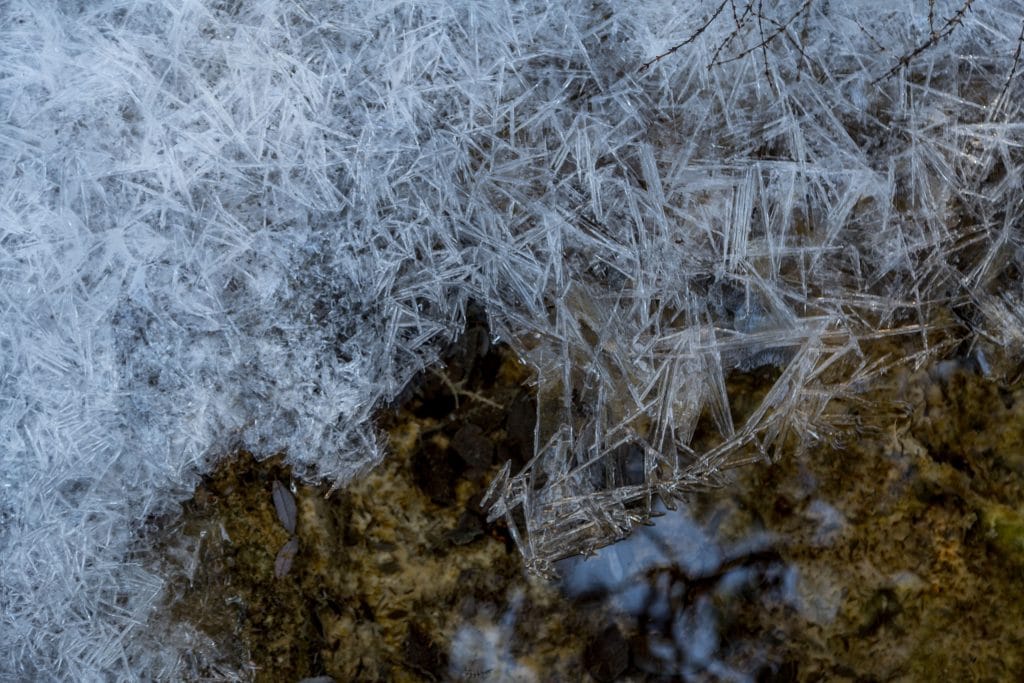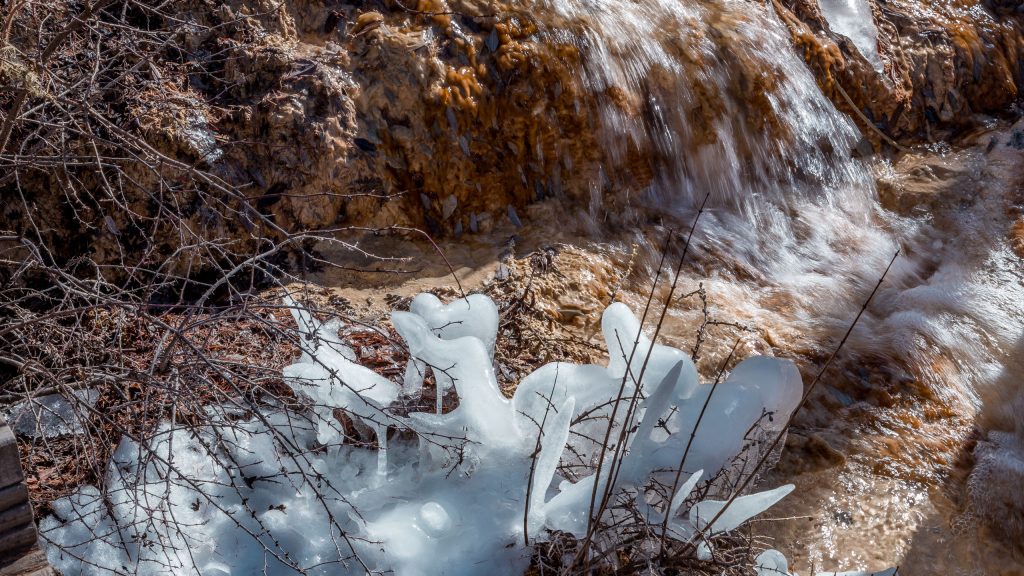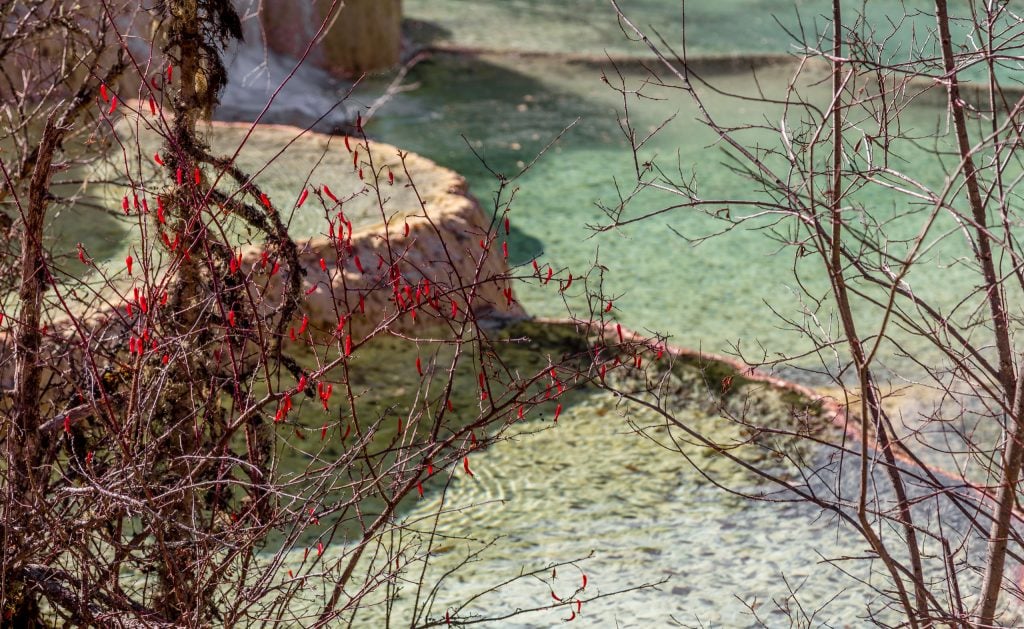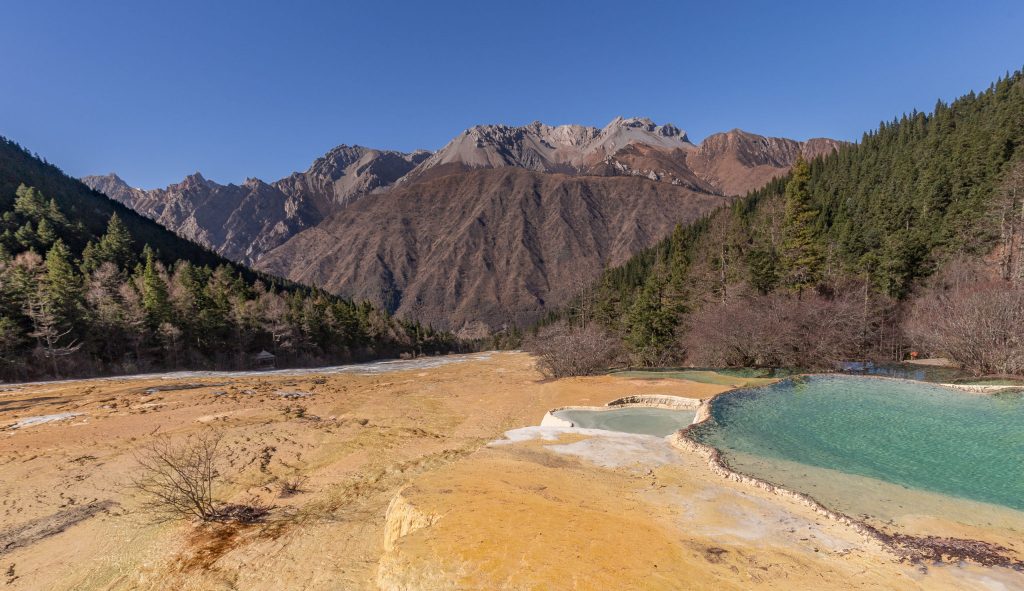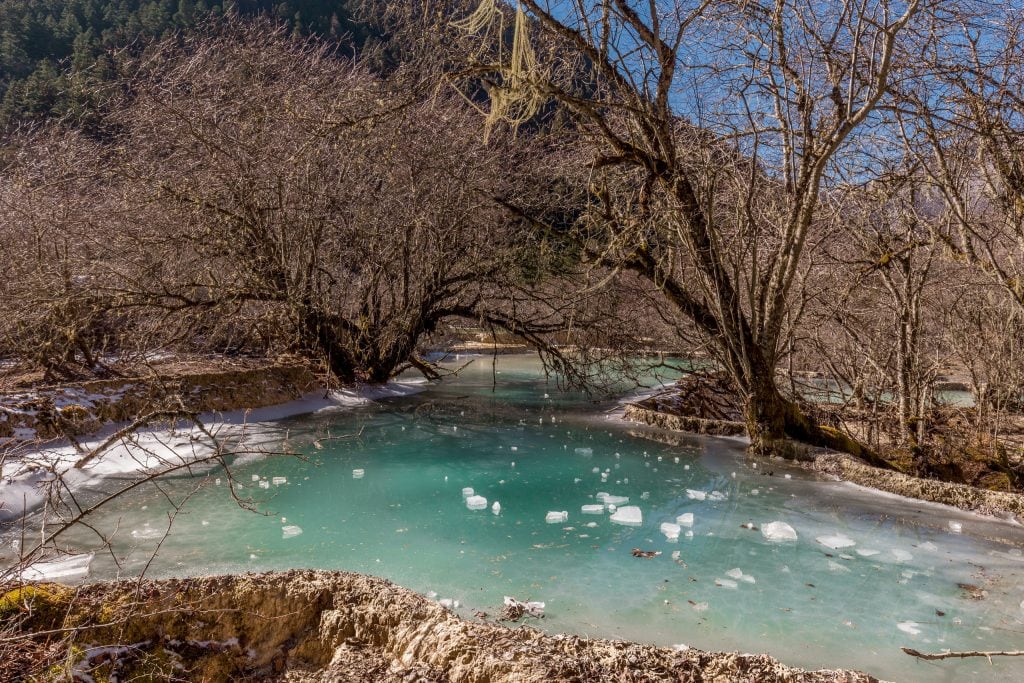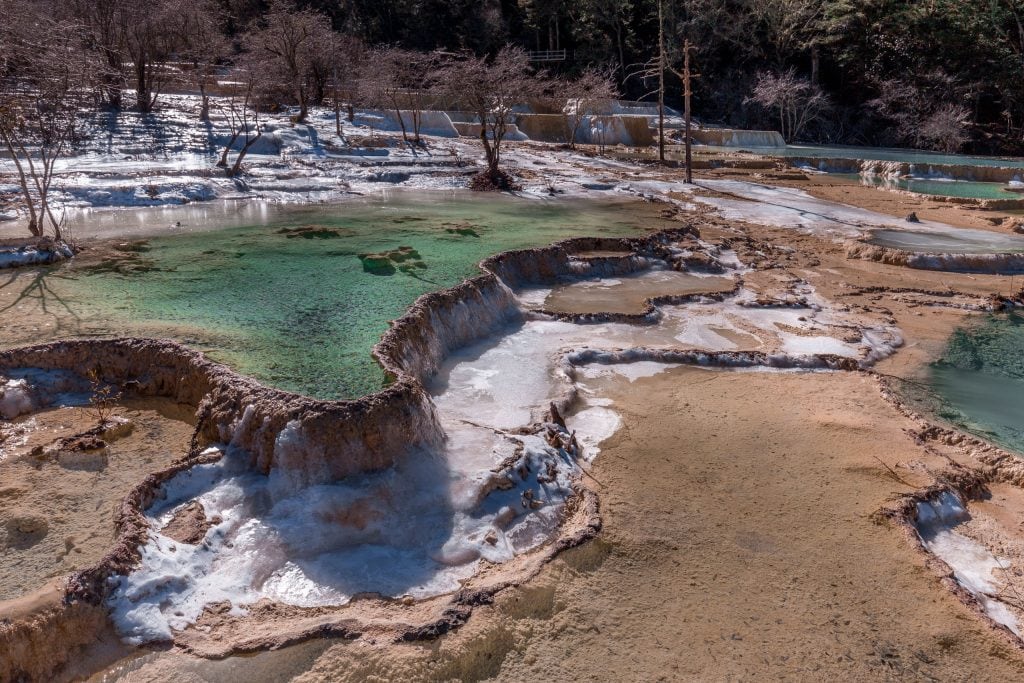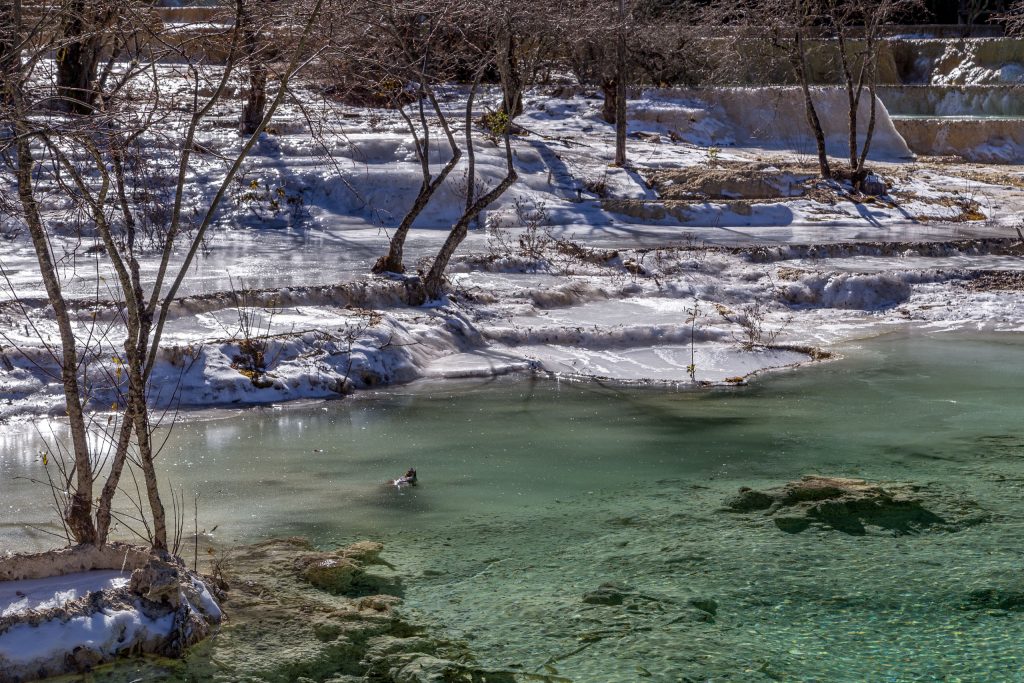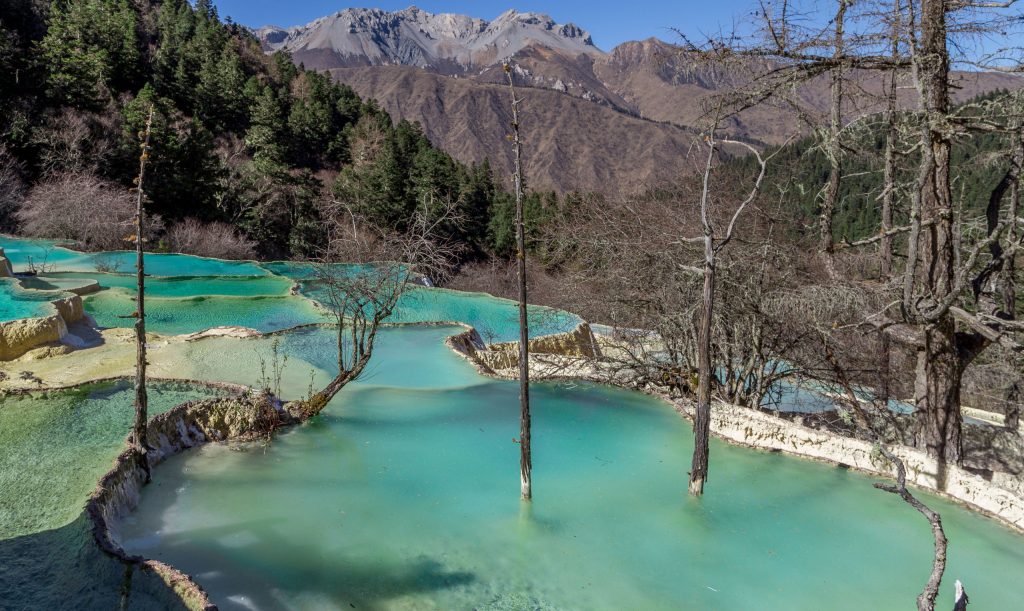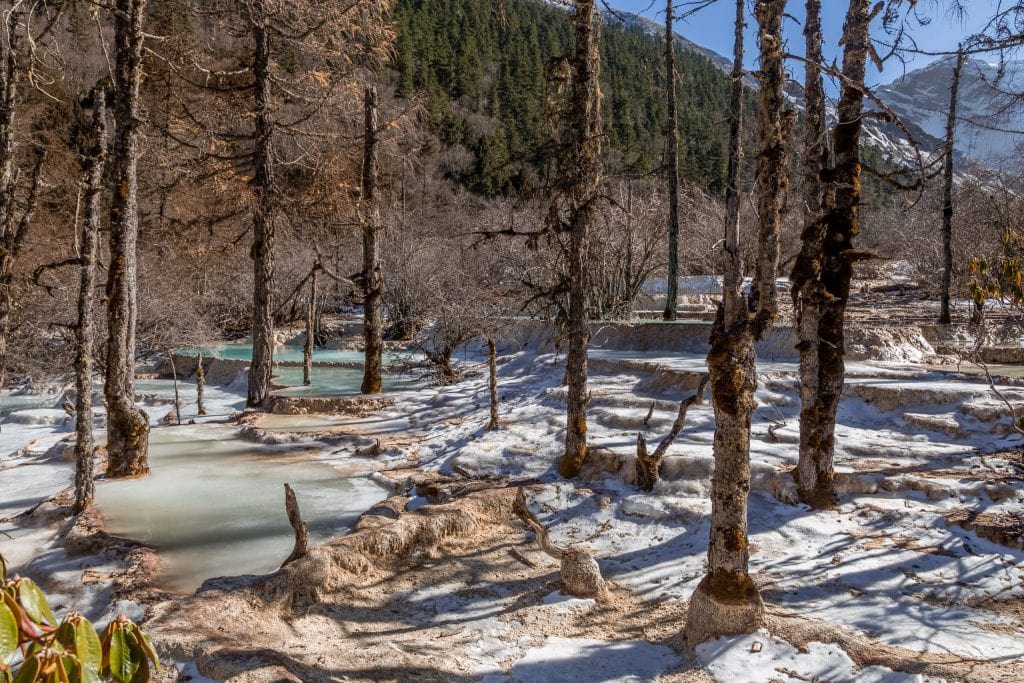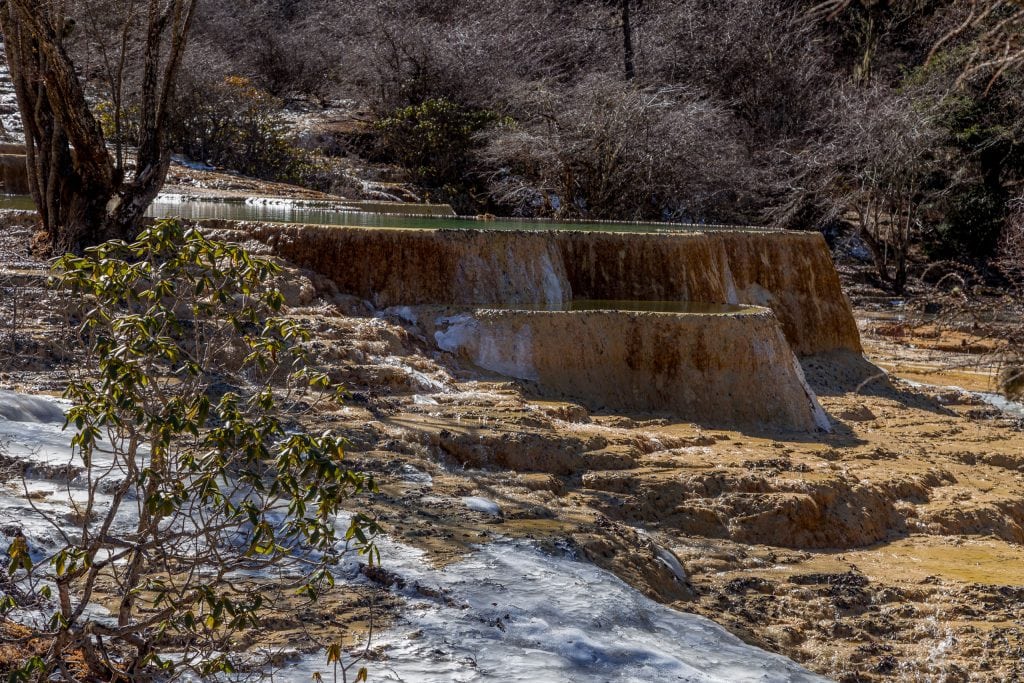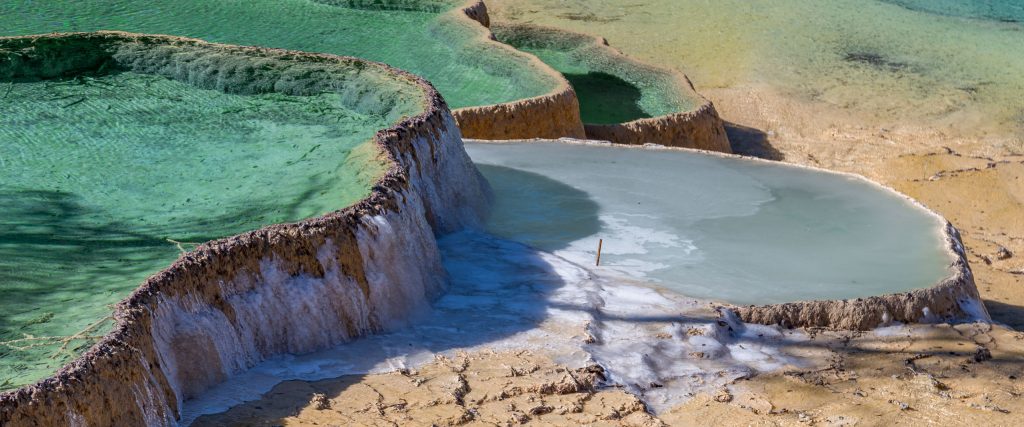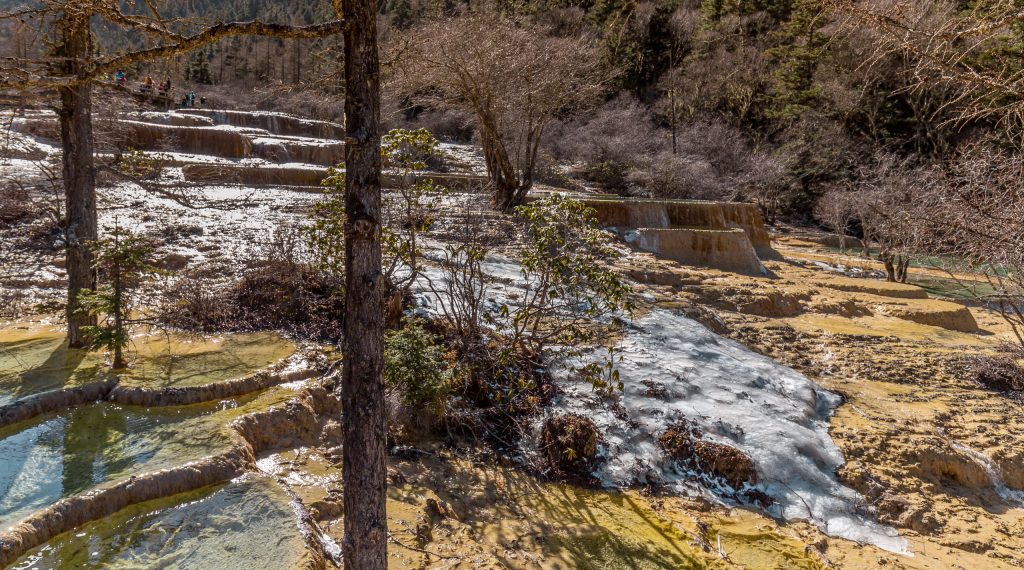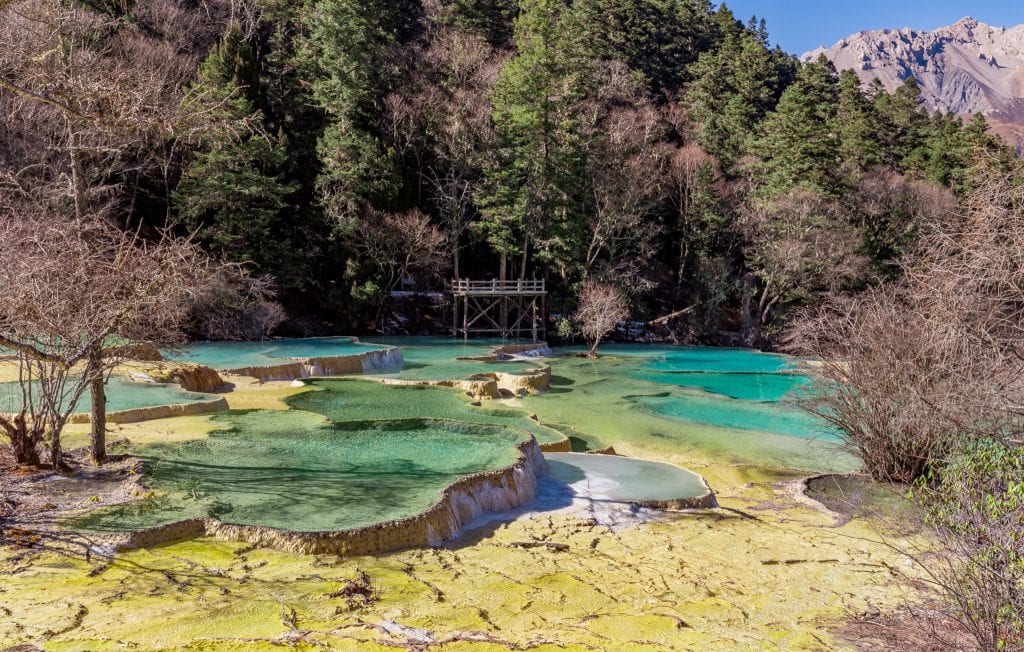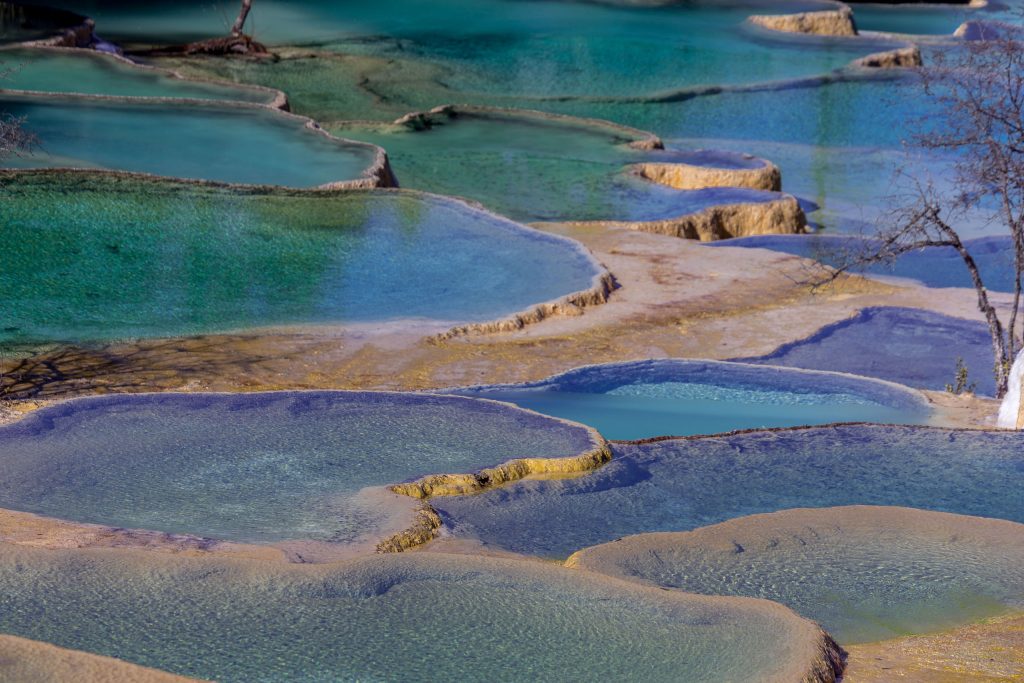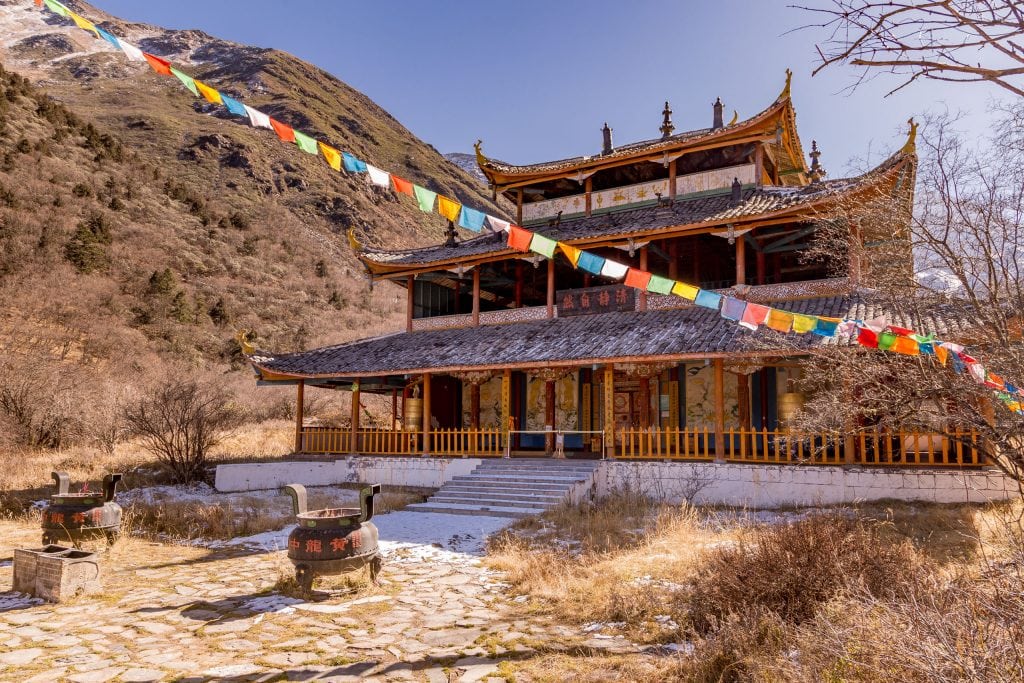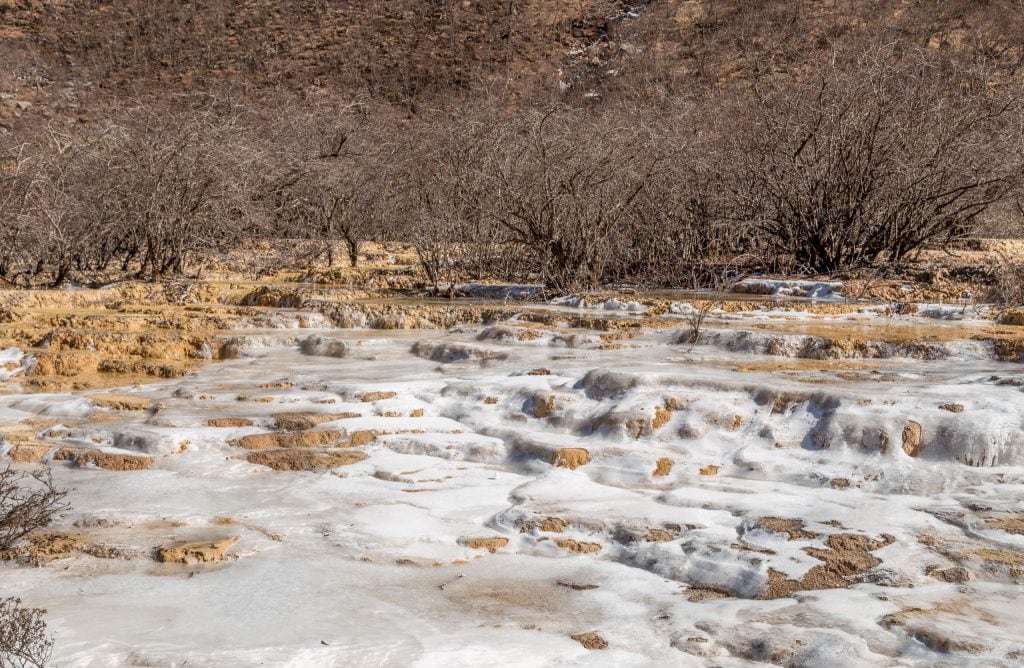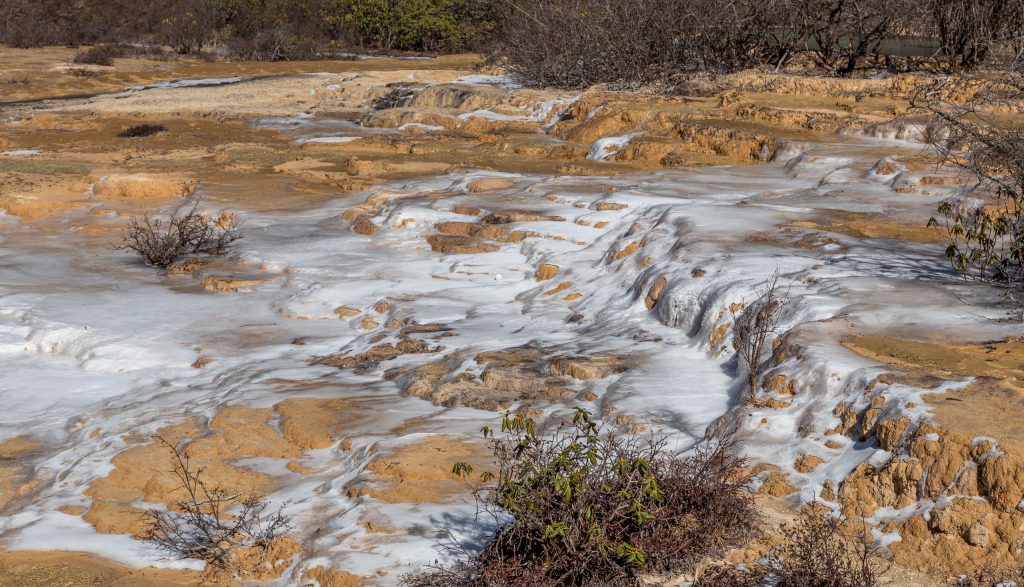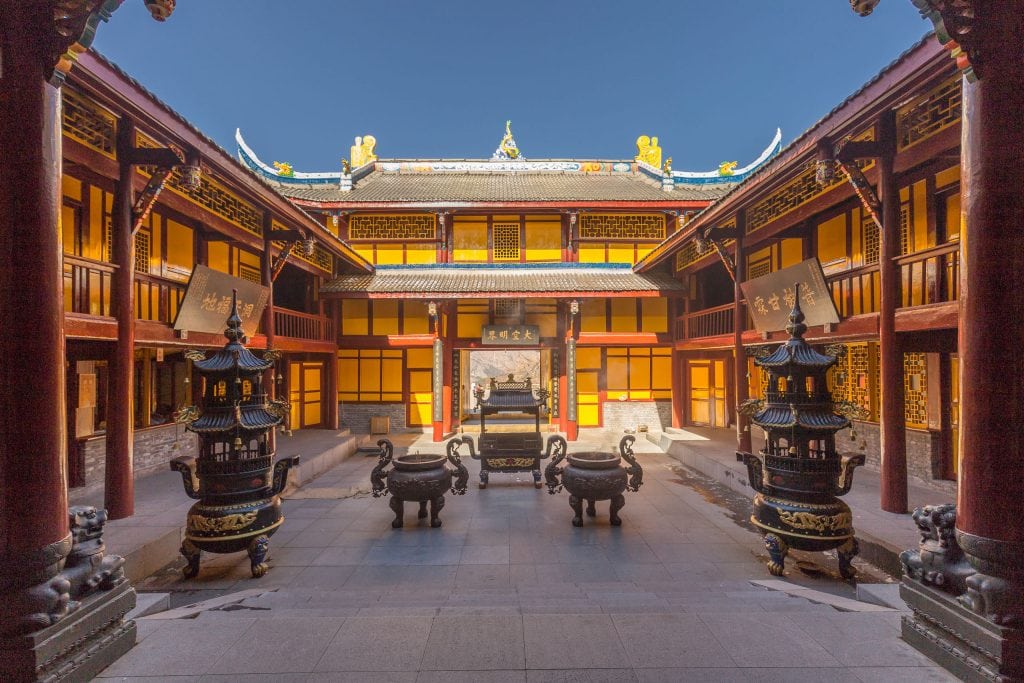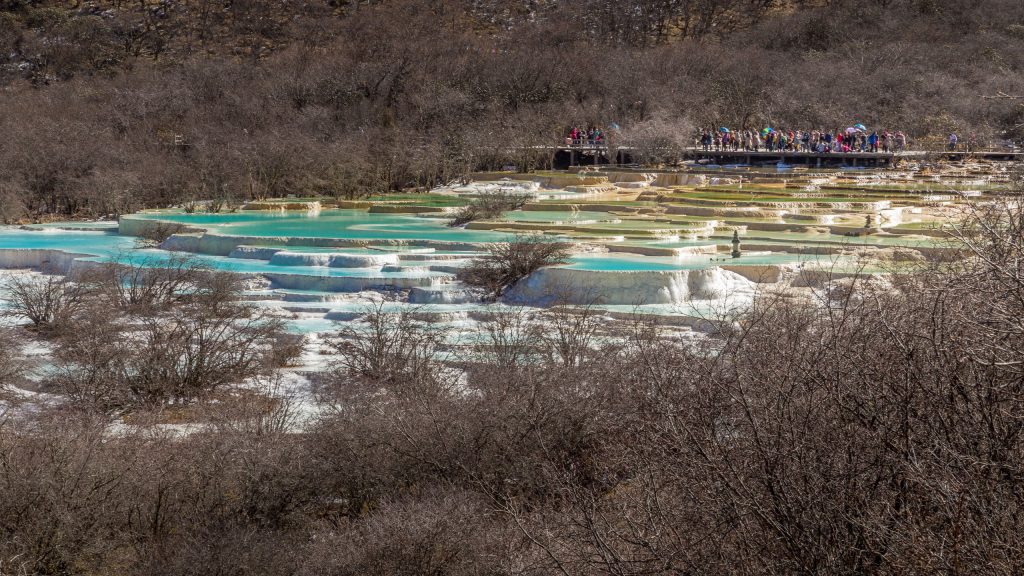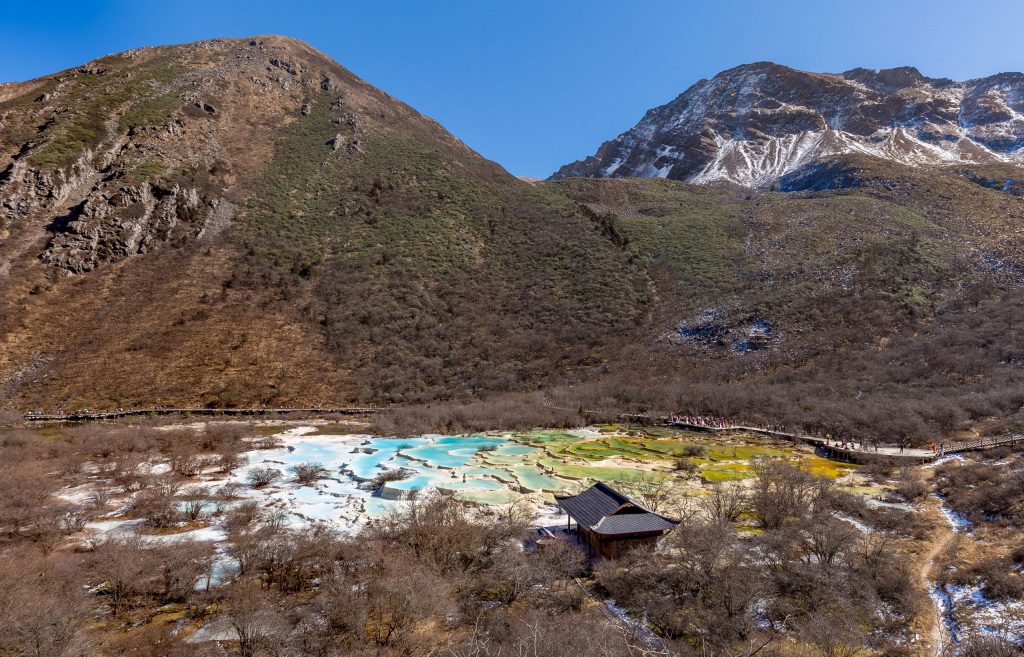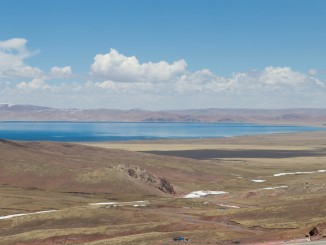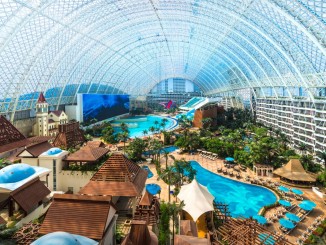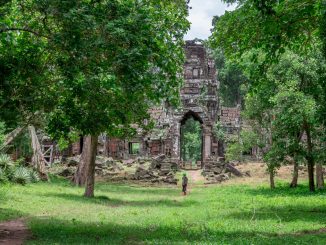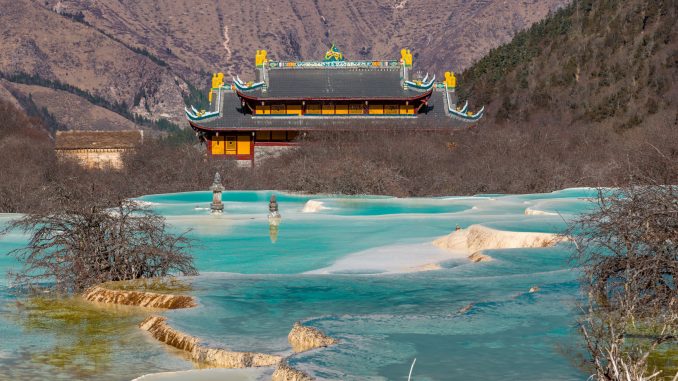
Table of Contents
Huanglong is one of two fairy tale scenic sites in north-western Sichuan province, China, which are a must see. They are an UNESCO World Heritage Site and for a reason. After my yearly business trip to Beijing I had the chance to see this beauty with my own eyes. Autumn leaves, frozen waterfalls and ponds colored blue through yellow make Huanglong a surreal place. Jiuzhaigou, the other site of which I will share my story later, is different but as beautiful. They are a must see in Sichuan and I’ll show you what to expect.
Getting to Huanglong
Huanglong is located 150 kilometers north of Chengdu within Songpan county and easily reached by a short flight from Chengdu or Chongqing. Jiuzhaigou airport is located a 1.5-hour drive from Huanglong. A visit is best combined with a visit to Jiuzhaigou which is exactly what I did. I stayed three nights at the Intercontinental Jiuzhai Paradise located near Jiuzhaigou. This location is preferred as the altitude is just 2500 meters and you need more time at Jiuzhaigou as Huanglong.
Huanglong altitude tips
Huanglong is located at an altitude between 1700 meters in the lowest valley up to 5588 meters at the highest peak. The valley of interest is located between 3500-4000 meters and that’s why you should visit Huanglong after Jiuzhaigou so that you are adjusted to the altitude. I arranged a private car to Huanglong to be flexible throughout the day. I left at 9 AM and it took me just over 2 hours to get from Jiuzhaigou to Huanglong leaving enough time to explore Huanglong and be back for dinner.
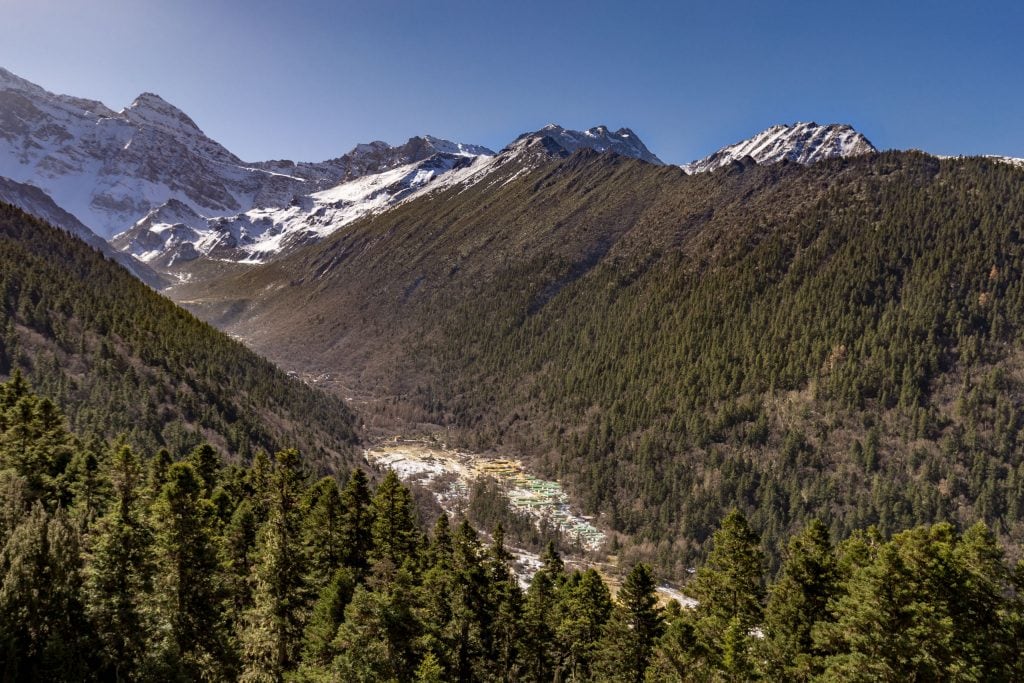
Visit Huanglong Scenic Area
When I arrived at the Huanglong ticket office it looked deserted as I didn’t see any other visitors. Along the road there is a kilometer or so boardwalk for the waiting lines in high season. Like any other place in China stay away during official Chinese holidays; you will regret that. The steep price of the entrance ticket at 280 RMB (about 40 euro at the time) reflects the beauty of the area but is quite high in my opinion.
Cable car or hiking?
I visited early November which is at the end of the season; the cable car was still working but does stop in the middle of November. Along the path in the park are many stands for shops but these were all closed for the winter. Buy all you need before going up. The alternative path was also closed due to snowfall so there was just one way up and down. I decided to go up by cable car as at the altitude walking up was still difficult. At the top of the cable car you have a flat walk to the top of Huanglong valley. Halfway there is a lookout point with a breathtaking view as you can see in the following picture.
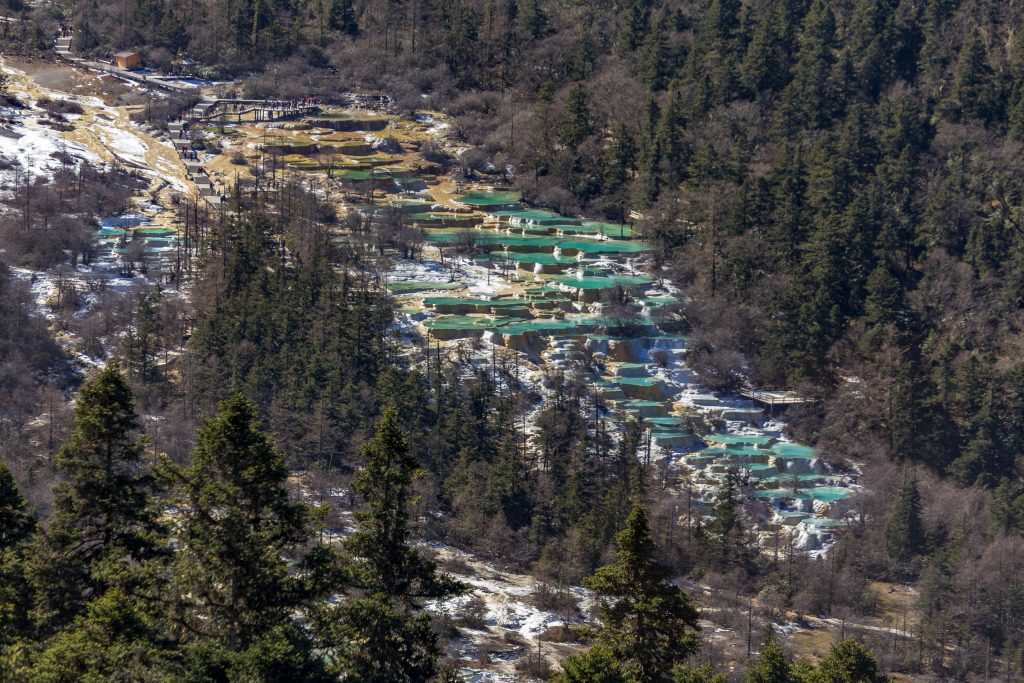
Huanglong geological information
Huanglong is made up of various cascades of natural pools behind travertine dams. Travertine is a kind of limestone and forms at hot springs when calcite from the water precipitates. That means that solved calcite dissolves rapidly due to a change in pressure. This calcite forms the limestone dams but can also form stalactites, stalagmites and tufa. Great examples of tufa are found at Mono Lake near Yosemite park, Merced. I visited Mono Lake three months ago with my daughter during a west coast USA road trip. The ponds at Huanglong are formed by travertine dams and have various colors due to different minerals and iron deposits in the water. One thing for sure is that these cascades are beautiful and surreal.
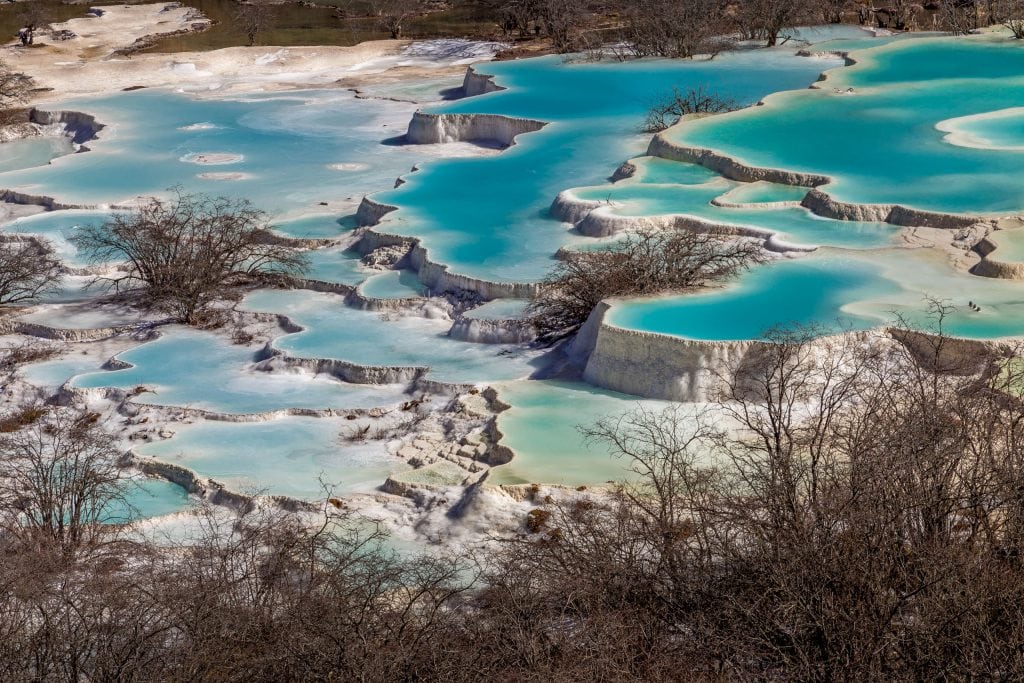
Exploring Huanglong
As said I arrived to the upper part of the Huanglong valley by cable car. There are a total of 14 main scenic spots within the valley.
Multicolored lake
The walk to the upper multicolored pond takes just under an hour with only the last 400 meters going up a bit. This collection of almost 700 pools is one of the two most beautiful places of Huanglong, in my opinion that is. A temple worth exploring is located at the foot of these ponds. The name multicolored pond does certainly apply here as colors range from rusty red to clear bright blue colors. I didn’t see any of such cascades before so it was even more breathtaking for me to see them.
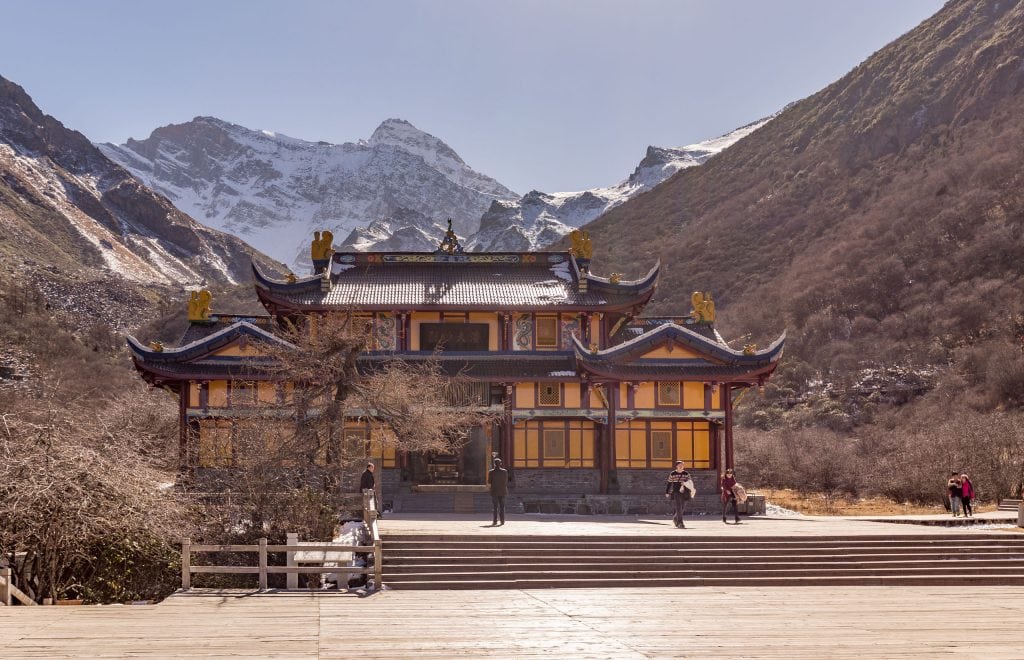
Upper and lower temple
After I explored the upper temple, the lower temple was closed, I started to walk down. A board walk zigzags along the ponds, streams and waterfalls. During summertime, there is an alternative path to walk but this path is closed in winter. I recommend however if you only walk one way to walk the main path for the best views. In November, the ponds and streams start to freeze and the slower streams already stopped flowing. After a short walk, I arrived at the second big collection of over 650 cascaded pools. It’s called the Flamboyant Pond.
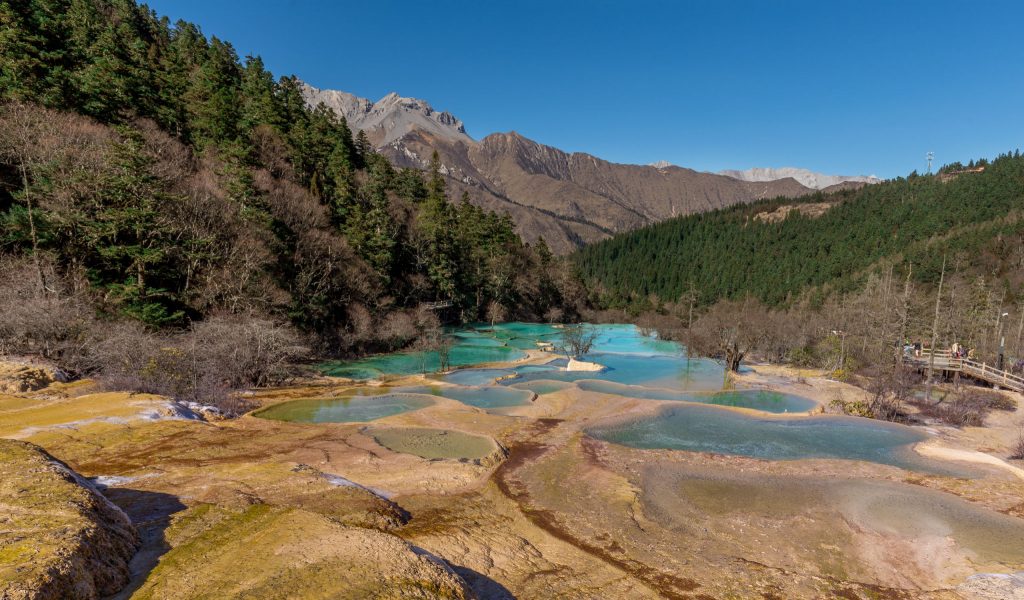
Flamboyant Pond and others
From the Flamboyant Pond the boardwalk will take you further down the valley passing the Azalea Pond, Mirror Pond and Bonsai Pond. I loved the view at the Bonsai Pond with its half frozen pools and trees growing in the water.
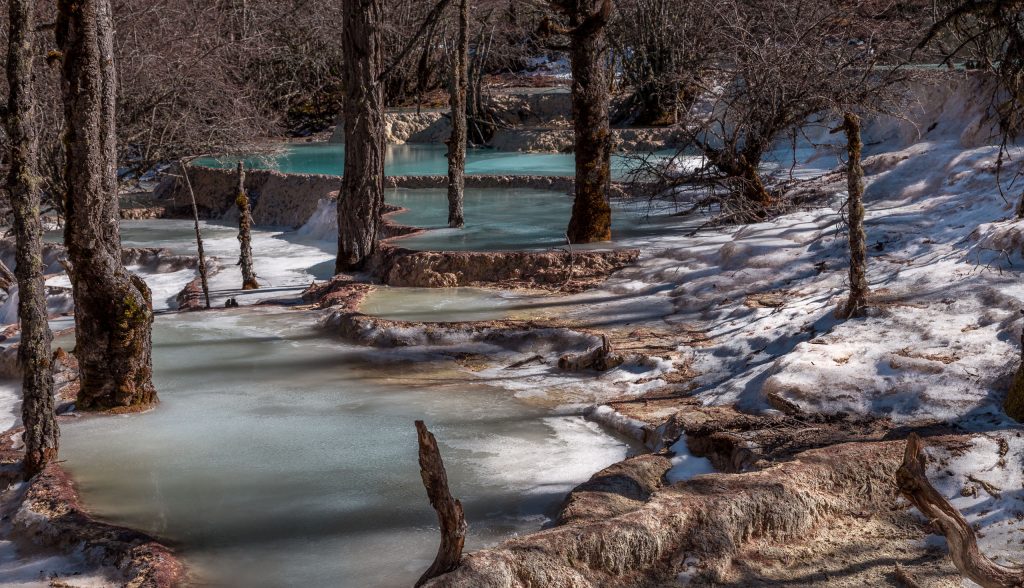
Golden Sand
Cascades of travertine pools are not the only geological formation in the Huanglong valley. Just below the Bonsai Pond there are two large stretches of golden sand over which a thin layer of water flows. When I visited the layer of water was partly frozen giving the sand a sparkling mirror look. These stretches of golden sand are called the Seven Mile Golden Sand and Golden Sand Pavement.
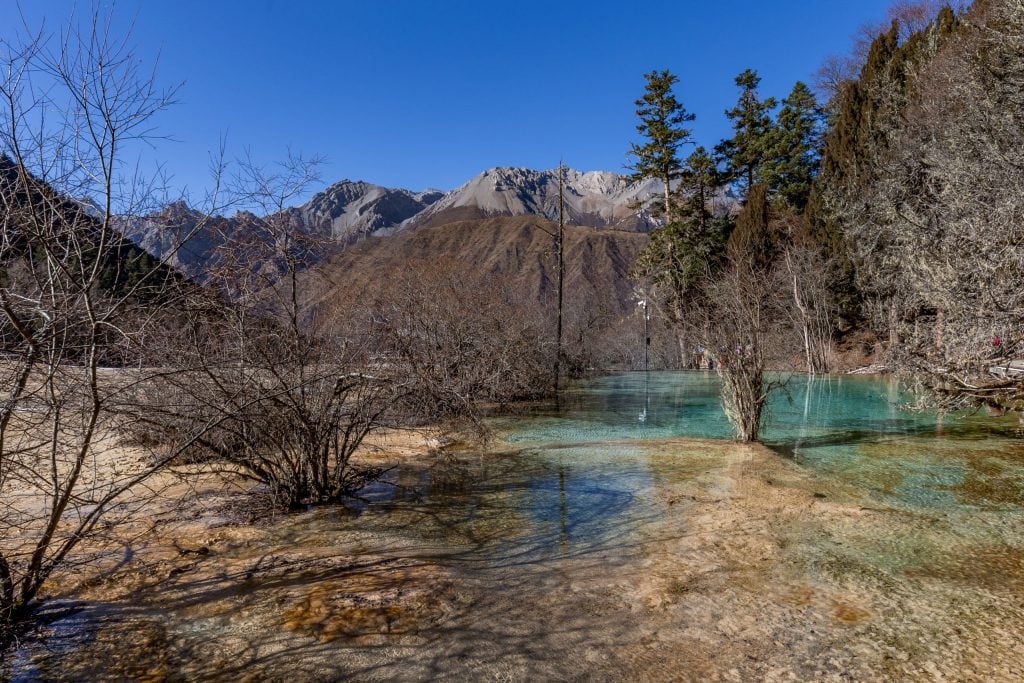
Washing Cave waterfall and others
The lower part of the valley doesn’t have that many ponds anymore. There are but they are not as nice as the upper ponds. Before I arrived at the lowest pond, called Guest Welcoming Pond, I passed several waterfalls. The first waterfall called Washing Cave was beautiful frozen as you can see in the following photo. I think this view is even better as if it would be flowing.
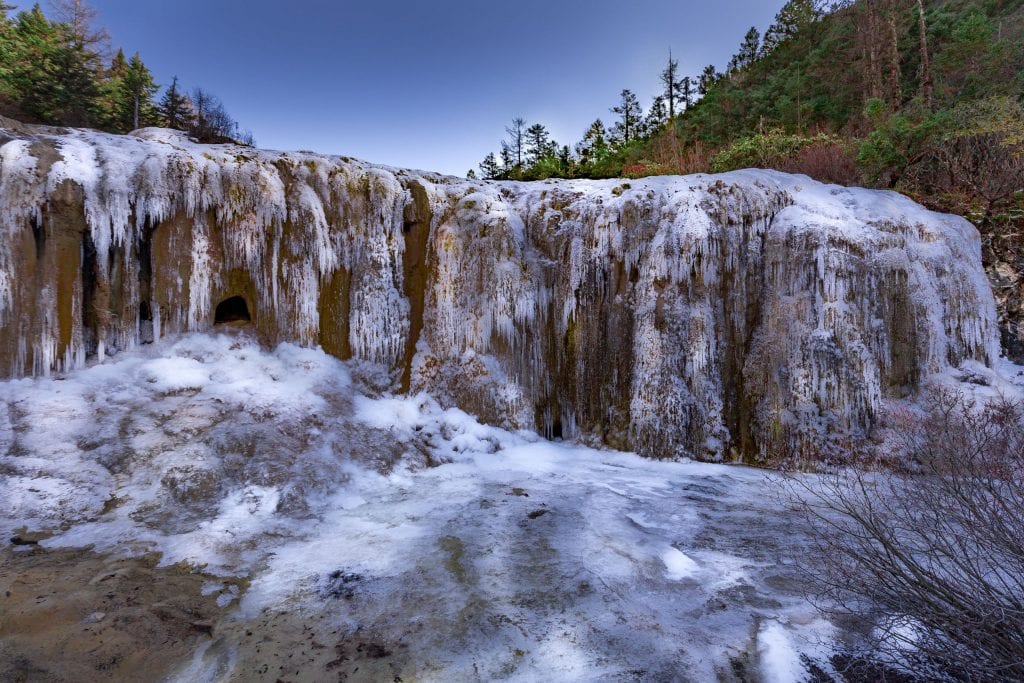
The other two falls are called the Flying Waterfall on Lotus Platform and the Marvelous Flying Waterfall. In between is a huge pond called Lianyan Pond. Most of the waterfalls and streams between pools didn’t have that much water. During November, the water supply isn’t that much as it stays in the form of snow. The water that is flowing starts to freeze which will give Huanglong a winter wonderland feeling. Melting water will start to flow again in spring when temperatures rise.
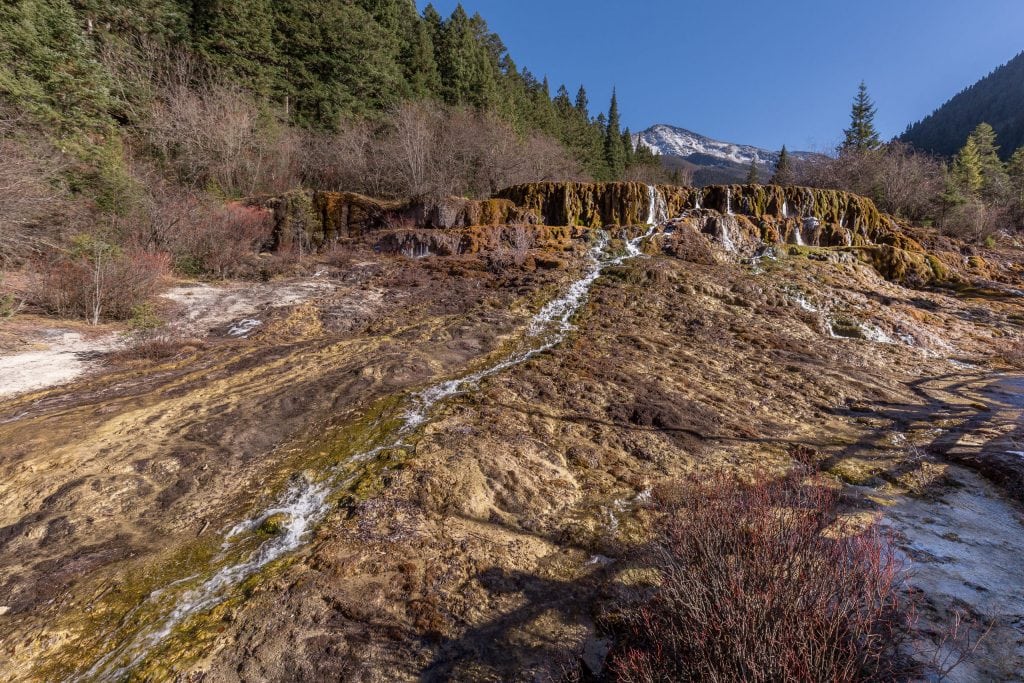
Although you could walk up and down in 4-5 hours it took me almost 5 hours by cable car up and to walk down. I made to many photos of which a small selection is in the gallery below. When I arrived at the exit my driver was already waiting to take me back to the Intercontinental Jiuzhai Paradise Hotel.
Hotsprings
The Huanglong UNESCO World Heritage Site consists also of a hot spring area and a huge waterfall. They are however located in the opposite direction and I was not able to fit them in the same day. I must return to the area anyway during another season to make different photographs. It’s one of the few places I have been to which I do want to return to. Especially for photography it’s an amazing place with different views in each season.
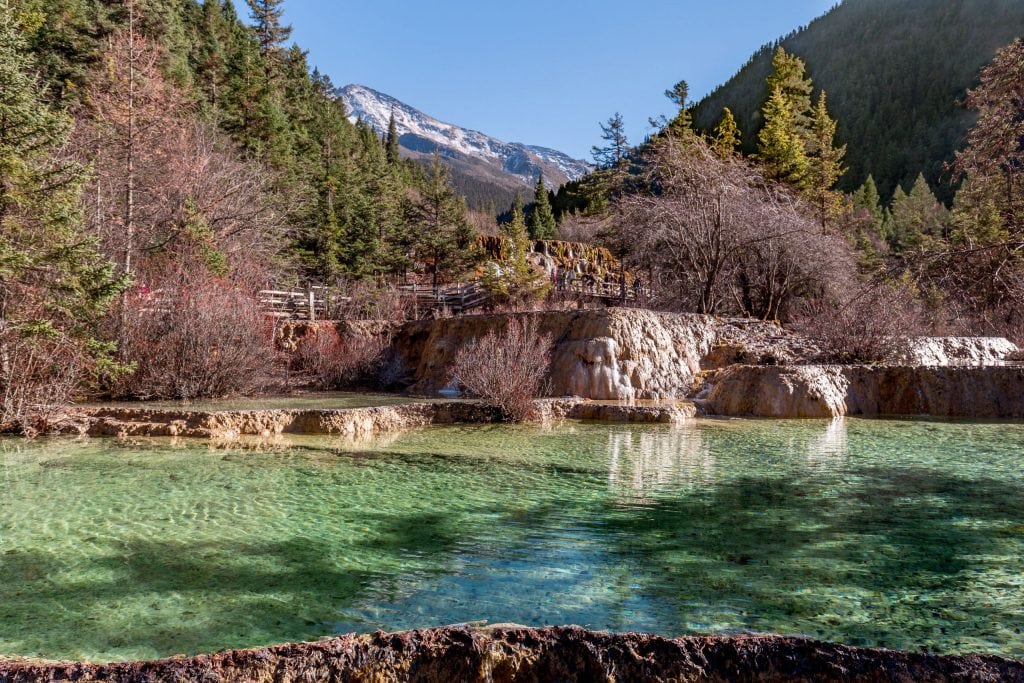
It was the last day of my China trip this year and for sure one of the highlights I have seen in China. I had one last night in Chengdu at the Crowne Plaza City Center before my flight home to the Netherlands. As I booked – of course – cheap business class tickets I had a day trip to Prague the day after for free. As China is one of my favorite countries I’m sure to return in the future; I hope soon. Check out my Yunnan itinerary as it’s easily combined with a visit to Huanglong.
Stay tuned for more stories and subscribe to the newsletter or follow CTB on social media (Facebook, Twitter, Instagram including Instagram stories; on all social media you can find CTB @christravelblog) to get updated information.
Did you visit Huanglong too or do you have questions? Please leave a comment at the bottom of the page. Love to hear from you!


